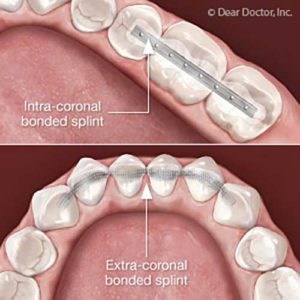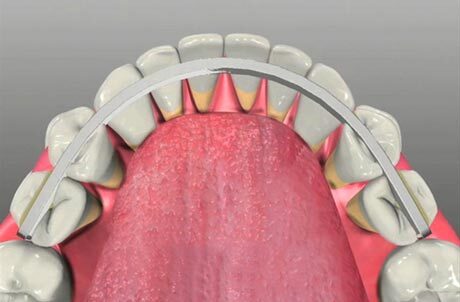When a tooth becomes loose, it is important to take care of it right away. Leaving a loose tooth untreated can cause serious discomfort when you try to bite. In the worse case, the problem could negatively impact the health of the surrounding teeth while causing your loose tooth to fall out.
On most occasions, a loose tooth is caused by a periodontal disease where a gum infection causes the gum and bone to pull away from the teeth. According to Centers for Disease Control and Prevention, approximately 47.2% of adults aged 30 years and older suffer from periodontal disease in one form or another.
Another reason why your teeth can become loose is due to primary occlusal trauma. This occurs when an extreme biting force is acting on the teeth for a prolonged period. This happens when one suffers from bruxism, which is the unconscious grinding and clenching of teeth. The condition affects roughly 10% of the adult population in the United States.
The treatment of loose tooth involves a two-pronged approach: biological and mechanical. The biological approach focuses on the treatment of the periodontal disease to prevent any deterioration of the gum as well as to offer a conducive environment for the mechanical elements to work. On the other hand, the mechanical approach seeks to alter the impact of the bite on the affected teeth by adjusting the forces applied on it. This is done through the reshaping of the teeth’s biting surfaces as well as dental splinting.
What is Dental Splinting?
Splinting involves the fastening of several teeth together via a splinting material—usually a metal strip or wire—to distribute the forces of a bite evenly among a group of teeth. Conceptually, the method operates on the same principles as a picket fence: the railings (splinting materials) connects the pickets (teeth) into a single unit to create a stronger structure.
This method of grouping teeth mitigates any further damage done on a loose tooth (or teeth) by enabling all the teeth to be hit with an equal force. Dental splinting is usually a temporary measure to give time for the loose tooth to heal. A temporary splint can be attached in two ways:
- Extra-coronal splint: This works similar to a permanent retainer by bonding a metal splint or Ribbond across the back of the teeth with a filling material such as resin. However, this does not last as long as intra-coronal splint and is normally used when a short-term solution is sufficient.
- Intra-coronal splint: This approach is done by creating a small channel across the teeth and laying a metal splint on it. The splint is then bonded and stablized on the teeth via dental cement or resin.

A permanent splinting can also be done by crowning the loose tooth (or teeth) and attaching a metal splint across the affected teeth. Patients who are diagnosed with bruxism may also be prescribed with a removable mouthguard (also known as nocturnal bite plates) to prevent any further damage during sleep.
Which Splinting Procedure Is the Best?
Each splinting method has its advantages and drawbacks, and must be weighed before a decision can be made. Furthermore, the long-term health of the loose tooth must be taken into consideration before the appropriate treatment plans can be carried out.
In serious cases, the periodontal disease have progressed significantly and done significant damage to render any treatment ineffective. In these scenarios, replacing the loose tooth with dental implants are the only options.
As such, it is best to consult your dentist for a diagnosis of the reasons behind your loose tooth as well as the possible treatment plans that can be put in place.





